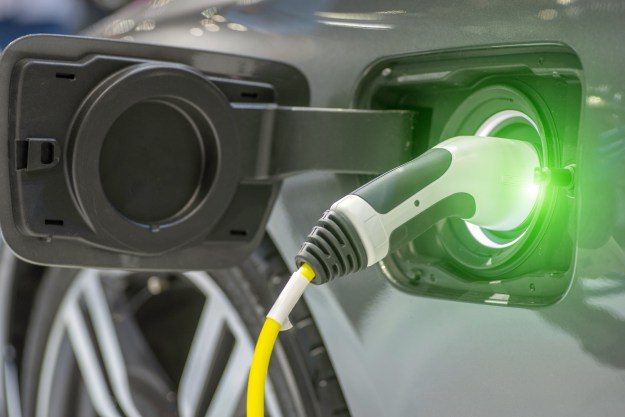When making power, there’s an old adage that says “there’s no replacement for displacement.”
However, carmakers are finding that they need to make engines smaller to meet stricter fuel-efficiency standards, while still providing the performance buyers are accustomed to.
Volvo proved those two things don’t have to be mutually exclusive this week, by unveiling a triple-turbocharged four-cylinder engine that makes 450 horsepower from just 2.0 liters of displacement.
It’s an impressive figure that shows the potential for small engines to produce big power, especially since the prototype is based on one of the Drive-E four-cylinders currently available in production Volvo cars.
Downsized engines appear capable of providing the power today’s car buyers expect, which is good news for both car enthusiasts and hyper-milers. The next challenge, however, will be reproducing the characteristics of the larger engines these fuel-sippers will replace.
Turbo power
The Volvo Drive-E engine uses turbocharging to punch above its weight, and it’s not the only one. We’re in the midst of a turbo renaissance, with everything from midsize family sedans to luxury performance cars using the devices keep power levels high in a regulation-constrained world.
This is nothing new. When the first round of fuel-economy standards and gas-price spikes hit in the 1970s and 1980s, engineers found that turbochargers – that use exhaust gases to spin a fan and drive more air into an engine – were a handy addition.
What followed was an era of turbo-craziness, producing memorable machines like the first Porsche 911 Turbo, the Saab 99 Turbo, and the Buick GNX. On the track, turbos proliferated in Formula One, the World Rally Championship, and IMSA sports-car racing.
Related: 2015 Volvo V60 T5 Drive-E review
However, the power produced by these early turbos came at a price. Turbochargers have to spool up to produce boost, causing “turbo lag.” This meant that, sometimes, an aggressive jab of gas pedal was followed by … nothing.
This unruliness caused carmakers to explore other ways to improve efficiency, leaving turbocharging primarily to performance cars and a handful of more mainstream models until tightening global emissions standards made them relevant again.
Modern turbos are remarkably free of lag, allowing carmakers to shrink the engines they’re attached to. That’s why the new 2015 Ford F-150 will only be offered with one V8 engine, even though previous models were offered almost exclusively with eight cylinders, and why the Blue Oval thinks it’s time to offer a four-cylinder engine in the Mustang again.
Electric slide
Smaller, turbocharged engines are conquering many realms of automobiledom, but there are still limits to how much power they can produce, and how smoothly they can deliver that power.
That’s why the Volvo Drive-E prototype has a secret weapon. Two of its three turbos are spun by exhaust gases, but the third is powered by electricity.
An electric motor doesn’t need to wait for gases to build up. Like the motors used to power so many other devices in the average car (or, sometimes, the car itself), this one can respond instantaneously.
That means plenty of power, with no waiting. With an electric turbo spooling up at low revs, an output figure that looks impressive on paper would also mean more in the real world, since that power would be more accessible. Imagine a four-cylinder engine that’s as powerful and responsive as a naturally-aspirated V8.
The prestige factor
Many customers want more than horsepower, after all. Buyers of luxury cars are used to the smooth power delivery of big, naturally-aspirated engines. A smaller engine might be able to move a leather-lined luxury sedan, but some drivers still may not approve if said engine feels like it was pulled from a hot hatchback.
That’s why electric turbochargers are mostly getting attention from upscale carmakers. Before Volvo unveiled its 450-hp Drive-E engine, Audi demonstrated an electric turbo on the RS5 TDI concept, a diesel version of one of the German automaker’s sportiest cars.
Audi will also be the first to put an electric turbocharger into production. While Volvo hasn’t discussed any production plans, Audi confirmed recently that it will use one on the SQ7, a performance version of the next-generation Q7 SUV.
Ferrari is also reportedly looking at an electric turbo to help increase responsiveness in an upcoming supercharged engine. If it’s good enough for that storied Italian brand, surely it’s good enough for everyone else.
 Conclusion
Conclusion
Downsized engines have already improved the efficiency of many new cars, and the electric turbocharger could help them do the same with
Officially, the triple-turbo Volvo Drive-E engine is just for show, but it’s easy to imagine one powering a large SUV like the recently-unveiled 2015 XC90, a big sedan, or a very hot performance car.
This might take some getting used to, of course. Giving up the roar of an uncorked V8 won’t be easy, and drivers will still have to remember that driving like The Stig will still result in poor fuel economy, even with fewer cylinders.
Still, new technology will likely help car enthusiasts have their cake and eat it to, providing the power they want, and the fuel economy they need.




